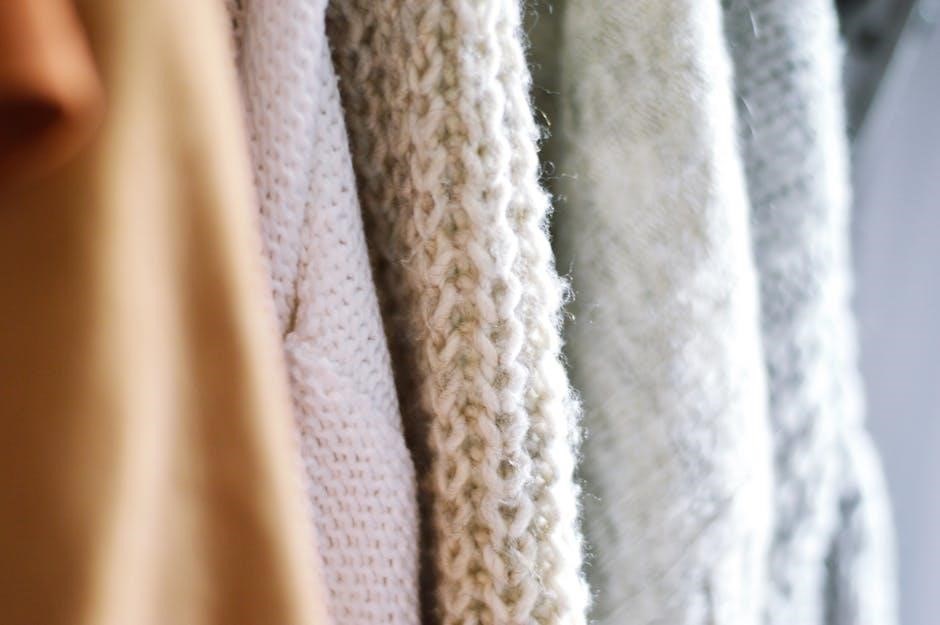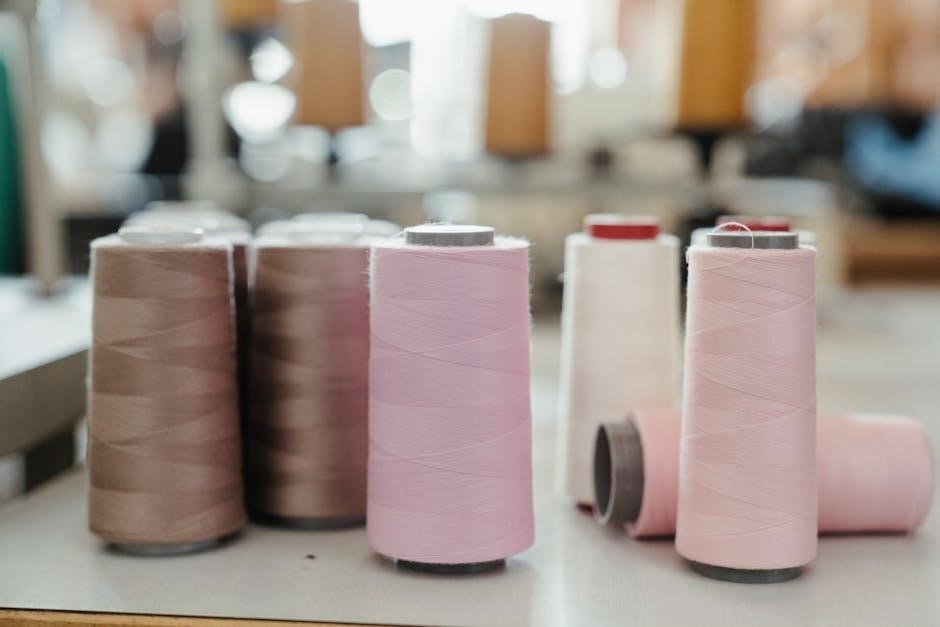
Thread identification is essential for ensuring proper component connections. It involves determining thread type, pitch, and diameter using tools like pitch gauges and calipers. Accurate identification prevents assembly issues and ensures compatibility with various thread standards, enhancing reliability and safety.
Importance of Thread Identification

Accurate thread identification is critical for ensuring proper connections and compatibility in various applications. Misidentification can lead to assembly issues, leaks, or even system failures, compromising safety and reliability. Thread identification ensures the correct selection of components, such as fittings, hoses, and pipes, which is vital for maintaining structural integrity and performance. It also prevents potential damage to equipment and reduces the risk of downtime. By understanding thread characteristics, including type, pitch, and diameter, individuals can guarantee seamless integration of components. This process is especially crucial in industries like manufacturing, automotive, and hydraulics, where precise connections are essential. Proper identification also aids in adhering to international standards, such as UNC, UNF, NPT, and Metric ISO, ensuring consistency and interoperability across systems.

Types of Threads
Threads are classified into straight or tapered, and male or female. Common types include NPT, NPTF, BSPP, BSPT, and metric threads. Identification involves measuring diameter and pitch accurately.
Straight vs. Tapered Threads
Threads can be categorized as straight or tapered based on their shape. Straight threads maintain a consistent diameter along their length, ensuring ease of assembly and disassembly. They are commonly used in applications like bolts and screws. Tapered threads, in contrast, have a diameter that decreases along the length, creating a tight seal when engaged. This design is often found in pipe fittings, such as NPT and NPTF threads, where a leak-proof connection is critical. Identifying whether a thread is straight or tapered is the first step in determining its type and application. This distinction is vital for selecting the correct mating component and ensuring proper functionality. Accurate identification helps prevent assembly errors and ensures compatibility with standard thread specifications.
Male vs. Female Threads
Threads are classified as male or female based on their configuration. Male threads are external and feature ridges that protrude outward, while female threads are internal and have grooves that recess inward. Proper mating of male and female threads is essential for a secure connection. Male threads are typically found on bolts, screws, and plugs, whereas female threads are commonly seen in nuts, receptacles, and ports. Identifying the gender of a thread is crucial for selecting the correct mating component. Misidentification can lead to compatibility issues, potentially causing leaks or mechanical failure. Visual inspection and measurement tools, such as thread pitch gauges, can help determine whether a thread is male or female. This distinction is fundamental in ensuring proper assembly and functionality across various applications, from plumbing to machinery.
Common Thread Types
Threads are broadly categorized into types based on their application and form. Straight threads, which are parallel, and tapered threads, which converge, are fundamental classifications. Hydraulic threads are designed for high-pressure systems, often requiring specific sealing solutions. Pneumatic threads are used in gas systems, ensuring secure connections to prevent leaks. General engineering threads serve structural and mechanical applications, offering versatility. Pipe threads, like NPT or BSPT, are used for connecting pipes and fittings. Hose threads are designed for flexible connections, such as in hydraulic hoses. Recognizing these thread types is crucial for selecting compatible components and ensuring proper functionality across various industries. This categorization helps in understanding the appropriate use and requirements for each type, facilitating effective thread identification and application.

How to Identify Threads
Identifying threads involves determining if they are straight or tapered, measuring the diameter, and finding the pitch using a thread pitch gauge. Reference charts and guides help confirm the thread type and standard, ensuring accurate identification for proper connections and compatibility.
Determining Thread Characteristics
Determining thread characteristics involves identifying key features such as thread type, pitch, diameter, and angle. Start by checking if the thread is straight or tapered. Use a thread pitch gauge to measure the distance between threads, which indicates the pitch. Measure the thread diameter using calipers, ensuring accuracy for both internal and external threads. Identify the thread angle by comparing it to standard angles like 60° for metric threads or 55° for Whitworth threads. Note whether the thread is male or female and its nominal size. These characteristics help classify the thread into standard types like UNC, UNF, or Metric ISO. Accurate determination of these features ensures proper identification and compatibility with fittings, hoses, or pipes, preventing assembly issues and ensuring reliable connections. This process is critical for selecting the correct components and maintaining system integrity.
Using a Thread Pitch Gauge
A thread pitch gauge is an essential tool for identifying thread characteristics. It measures the distance between threads, determining the pitch in threads per inch (TPI) or millimeters. Start by selecting the appropriate gauge for the thread type—metric or imperial. Place the gauge on the thread and align it with the thread crests. Use the blade that fits snugly into the thread space to determine the pitch. For imperial threads, count the number of threads per inch, while for metric threads, measure the distance between threads in millimeters. Always clean the threads before measurement to ensure accuracy. Using a thread pitch gauge helps classify the thread into standard types like UNC, UNF, or Metric ISO. Accurate pitch measurement is critical for matching components and ensuring proper assembly. This tool is indispensable for anyone working with threaded connections, providing reliable results for thread identification. Regular calibration of the gauge ensures consistent accuracy.
Step-by-Step Identification Process
Identifying threads systematically ensures accuracy and efficiency. Begin by visually inspecting the thread to determine if it is straight or tapered. Next, measure the nominal diameter using calipers, recording both the outside diameter of male threads and the inside diameter of female threads. Use a thread pitch gauge to measure the pitch, either in threads per inch (TPI) for imperial threads or millimeters for metric threads. Identify the thread standard by comparing the measured diameter and pitch to reference charts or guides. Finally, confirm the thread type by cross-referencing these measurements with standard thread profiles, such as UNC, UNF, or Metric ISO; This process ensures precise identification, enabling correct component selection and compatibility. Always refer to a thread identification chart or guide for accurate results, as incorrect identification can lead to assembly issues or system failures.

Measurement Techniques
Measure thread diameter using calipers, and pitch with a thread pitch gauge. Determine if threads are straight or tapered and measure the seat angle using specific gauges. Accurate measurements ensure proper thread identification and compatibility, crucial for secure connections and system reliability.
Measuring Thread Diameter
Measuring thread diameter is critical for accurate thread identification. Use digital or vernier calipers to measure the major diameter of external threads or the minor diameter of internal threads. For external threads, measure across the crest of two adjacent threads. For internal threads, measure the distance between the roots of two threads. Ensure the calipers are properly calibrated and positioned perpendicular to the thread axis for precise readings. Additionally, thread gauges, such as GO/NO-GO gauges, can be used to verify thread acceptance. Always record measurements in both inches and millimeters for comparison with standard thread charts. Accurate diameter measurement helps determine the nominal size and ensures compatibility with mating components. This step is essential for selecting the correct fitting or fastener, preventing assembly issues, and maintaining system integrity.

Measuring Thread Pitch
Measuring thread pitch is a fundamental step in thread identification, representing the distance between adjacent threads. Use a thread pitch gauge to determine the pitch by aligning the gauge’s teeth with the thread crests. For metric threads, measure the distance between one thread crest to the next. For imperial threads, count the number of threads per inch (TPI). Alternatively, measure the distance over several threads (e.g., 10) and divide by the number of intervals. Always use a calibrated tool for accuracy. This measurement helps classify the thread as coarse, fine, or extra-fine, ensuring proper compatibility with mating components. Accurate pitch measurement is vital for selecting the correct fittings or fasteners, preventing connection failures, and maintaining system reliability.
Using Calipers and Thread Gauges
Calipers and thread gauges are essential tools for precise thread measurement. Calipers measure the major (external) and minor (internal) diameters of threads, providing critical dimensional data. For external threads, measure the distance across the crests, while for internal threads, measure the distance across the roots. Thread gauges, such as GO/NO-GO gauges, verify whether the thread dimensions fall within acceptable tolerance limits. Start by measuring the major diameter using calipers, then use a pitch gauge to determine the thread pitch. For internal threads, insert the calipers or thread gauge carefully to avoid damage. Always ensure the tools are calibrated and used correctly to maintain accuracy. This process helps confirm thread specifications, ensuring compatibility with mating components and preventing assembly errors. Proper use of these tools is vital for reliable thread identification and quality control in manufacturing and maintenance applications.

Common Thread Standards
Common thread standards include UNC, UNF, UNEF, Metric ISO, BSPP, BSPT, NPT, NPTF, and Metric JIS. These standards define thread dimensions, pitches, and tolerances for compatibility and reliability in various applications.
UNC, UNF, and UNEF Threads
UNC (Unified Coarse), UNF (Unified Fine), and UNEF (Unified Extra-Fine) threads are widely used in North American standards. UNC threads have a coarse pitch, making them suitable for general-purpose applications where strength and ease of assembly are priorities. UNF threads, with a finer pitch, offer a smoother engagement and are ideal for precision or high-stress applications. UNEF threads feature an even finer pitch, typically used in specialized scenarios requiring minimal thread engagement, such as thin-walled components. These thread types are defined by their major diameter, pitch, and number of threads per inch. UNC, UNF, and UNEF standards ensure compatibility and consistency across various industries, including automotive, aerospace, and manufacturing. Proper identification of these threads is crucial for selecting the correct fasteners and ensuring reliable connections.

Metric ISO Threads
Metric ISO threads are standardized under the International Organization for Standardization (ISO) and are widely used globally. These threads are defined by their nominal diameter in millimeters and pitch in millimeters per thread. They feature a 60-degree thread angle, with coarse and fine pitches available. Coarse-pitch threads are more common, while fine-pitch threads are used for precision applications. Metric ISO threads are designated by their major diameter and pitch, such as M6 x 1, where 6mm is the nominal diameter and 1mm is the pitch. These threads are used in various industries, including automotive, machinery, and construction. Proper identification of metric ISO threads ensures compatibility with international standards, making them essential for global manufacturing and engineering applications. Their standardized dimensions promote interchangeability and reliability in threaded connections.

BSPP and BSPT Threads
BSPP (British Standard Pipe Parallel) and BSPT (British Standard Pipe Taper) threads are British standards commonly used in piping systems. BSPP threads are straight and parallel, while BSPT threads taper to create a seal. Both types are used for fluid and gas connections. BSPP threads rely on a sealant for leakage prevention, whereas BSPT threads create a tapered seal. These threads are identified by their nominal size, pitch, and angle. BSPP and BSPT threads have a 55-degree angle and are widely used in industries like hydraulics, pneumatics, and oil and gas. Proper identification is crucial for ensuring compatibility and safety in high-pressure applications. Using thread pitch gauges and reference charts helps in accurately determining these thread types. Their robust design makes them ideal for harsh environments, ensuring reliable connections in various industrial settings.
NPT and NPTF Threads

NPT (National Pipe Tapered) and NPTF (National Pipe Tapered Fuel) are American standard threads commonly used in piping systems. NPT threads are tapered, creating a seal when engaged, while NPTF threads are similar but designed for a tighter fit to prevent leakage without sealants. Both have a 60-degree angle and are measured by threads per inch (TPI). NPT and NPTF threads are widely used in applications like pipes, fittings, and fluid connections. They are identified by their nominal size, pitch, and taper. NPTF threads are often used in high-pressure or hazardous environments due to their superior sealing properties. Proper identification using thread pitch gauges ensures compatibility and safety. These threads are essential in industries such as oil, gas, and aerospace, where reliable connections are critical. Always refer to thread identification charts for accurate measurements and specifications.
Metric JIS Threads
Metric JIS (Japanese Industrial Standard) threads are widely used in Japan and follow the ISO metric thread standard. They feature a 60-degree thread angle and are designed for precision applications. Metric JIS threads are classified into three classes: Class 1 for loose fits, Class 2 for general use, and Class 3 for tight precision fits. These threads are commonly found in machinery, automotive, and electronic components. They are identified by their nominal diameter and pitch, measured in millimeters. Proper identification ensures compatibility with mating parts. Metric JIS threads are similar to ISO threads, making them interchangeable in many cases. Their precise tolerances make them ideal for high-accuracy assemblies. When identifying, measure the major diameter and pitch, then refer to JIS thread charts for specifications. Accurate identification is crucial for ensuring proper fit and functionality in applications requiring metric JIS threads.




